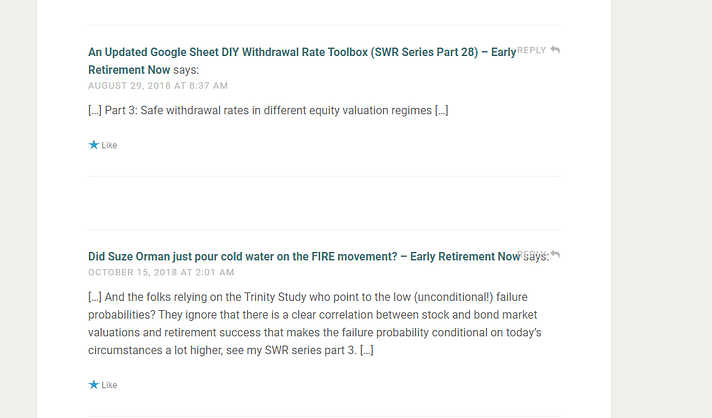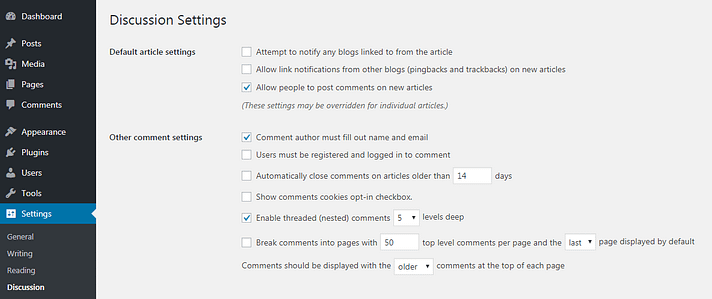If you’re a perceptive user, you may have noticed a setting in your dashboard relating to WordPress pingbacks and trackbacks. However, there’s a good chance you have no idea what these techniques are, or why they’re controversial.
In a nutshell, pingbacks and trackbacks are technologies that notify other websites when content has been published that their users might find interesting. While this sounds pretty good in theory, there are also a number of downsides to using both strategies, which is why we recommend that you disable them.
In this article, we’re going to start out by explaining what WordPress pingbacks and trackbacks are and discussing their pros and cons. Then, we’ll show you how you can disable both on your own website. Let’s take a look!
An introduction to WordPress pingbacks and trackbacks
The first thing we need to do is clearly define the terms ‘pingback’ and ‘trackback’. While they are similar in many ways, the two are still distinct techniques.
What are trackbacks?
A trackback is a notification that WordPress sends to an external site when you link to it in your content. Let’s say that you’ve just published a new blog post on dog training tips, which includes a link to another website that contains some solid advice for your readers.
In this scenario, you could send a trackback ‘ping’ to that site, in order to get the owner’s attention. That person could then choose to approve the trackback. This would display an excerpt of your post and a link to your site in their comments section.
What are pingbacks?
Pingbacks in WordPress have a very similar goal, but they work a little differently. In fact, they were actually created to be a better version of trackbacks, in order to resolve some of the problems with the technique (which we’ll look at shortly).
The key thing to understand is that while trackbacks are sent manually, pingbacks are automatic. To illustrate this, we’ll go back to our earlier example. Let’s say you have pingbacks set up on your blog, and you just published that article about dog training tips (linking to the same external website as before).
In this case, a pingback would immediately be sent to the site you linked to – as long as it also has pingbacks enabled. That site would then automatically check to verify that the pingback originated from your post (and wasn’t some type of spam), before displaying it as a simple link in the comments section. In most cases, pingbacks won’t include an excerpt from the post in question, though this depends on the theme that a site is using.
From your perspective, the trackback and the pingback work in a very similar way. The most vital differences are ‘under the hood’ – the communication technologies used are different. However, it isn’t necessary to understand all the technical details in order to get a sense for the advantages and drawbacks of using these techniques.

An example of what pingbacks/trackbacks look like
The pros and cons of using WordPress pingbacks and trackbacks on your site
In order to understand why we recommend that you disable pingbacks and trackbacks, let’s discuss the pros and cons.
Pros 
It’s easy to see why so many people have used both pingbacks and trackbacks in the past. The potential benefits of these technologies include:
- Increasing backlinks to your own site, driving traffic your way and improving your Search Engine Optimization (SEO).
- Making connections with related sites, and encouraging them to share your content by showing your willingness to promote theirs.
- Offering more value to your readers, by introducing them to other content they may find useful.
Cons 
The biggest issue with trackbacks is that they soon became used to send huge amounts of spam. As trackbacks can be sent manually to any site, spammers use them to get their links posted on as much content as possible.
Keeping these spam trackbacks off your site requires manually checking each one since there’s no other way to verify that they aren’t fake. Naturally, the time spent moderating these trackbacks could be better used elsewhere. It also makes them a lot less valuable than they could be in a theoretical sense.
As we mentioned earlier, pingbacks were designed mainly to resolve this spam problem. That’s why they work automatically, and require verification before they can be posted. In addition, they won’t even be sent unless both blogs have enabled pingbacks.
However, pingbacks soon fell victim to the same downsides as trackbacks. Many spammers were able to easily overcome the protections put into place. That resulted in a lot of fake and malicious pingbacks. Again, this means that sites with this feature enabled generally have to spend a lot of time moderating the resulting comments.
In addition, you can end up with something called ‘self-pings’. If you link to another post or page on your own site, the pingback feature will send a notification (as though you were linking to an external source). This isn’t very useful and can quickly become an annoyance, although you can eliminate this problem with a free plugin like No Self Pings.
Most sites should disable WordPress pingbacks and trackbacks (here’s how to do it)
There’s been a lot of controversy over the years as to whether using pingbacks and trackbacks is worth the downsides. These days, however, it’s widely recommended that you avoid both techniques.
At the end of the day, using WordPress pingbacks and trackbacks tends to result in a lot of spam and wasted time. Even if they can provide a few benefits, there are better ways to drive traffic to your site.
In addition, very few people actually use these technologies in a legitimate way at this point. This means that, more so than in the past, you’re likely to get a lot more fake pingbacks and trackbacks than legitimate ones.
Fortunately, disabling both on your own site is a simple matter. In your WordPress dashboard, you can navigate to Settings > Discussion:


Here, you’ll want to deselect the first two options:
- Attempt to notify any blogs linked to from the article
- Allow link notifications from other blogs (pingbacks and trackbacks) on new articles
This will prevent your site from creating and receiving pingbacks and trackbacks. As a result, you should have an easier time keeping your comments section under control. Plus, you’ll free up time that can be devoted to more effective audience-building strategies.
Skip the pingbacks and trackbacks!
Pingbacks and trackbacks do have benefits in theory, but there are plenty of reasons why they’re rarely used these days. Ultimately, the downsides of both outweigh the potential for a slight boost to traffic and visibility.
Keeping WordPress pingbacks and trackbacks active on your site is likely to result in a lot of spam coming from people who just want to get a link of any sort posted on your content. The good news is that you can quickly disable both options in your WordPress Settings screen.
Have you ever used pingbacks and trackbacks on a WordPress site, and what was the result? Share your experiences with us in the comments section below!
#WordPress pingbacks and trackbacks explained, plus why you really should just disable them
Free guide
By John Hughes
Themeisle Contributor
523 Posts
source : https://themeisle.com/blog/wordpress-pingbacks/